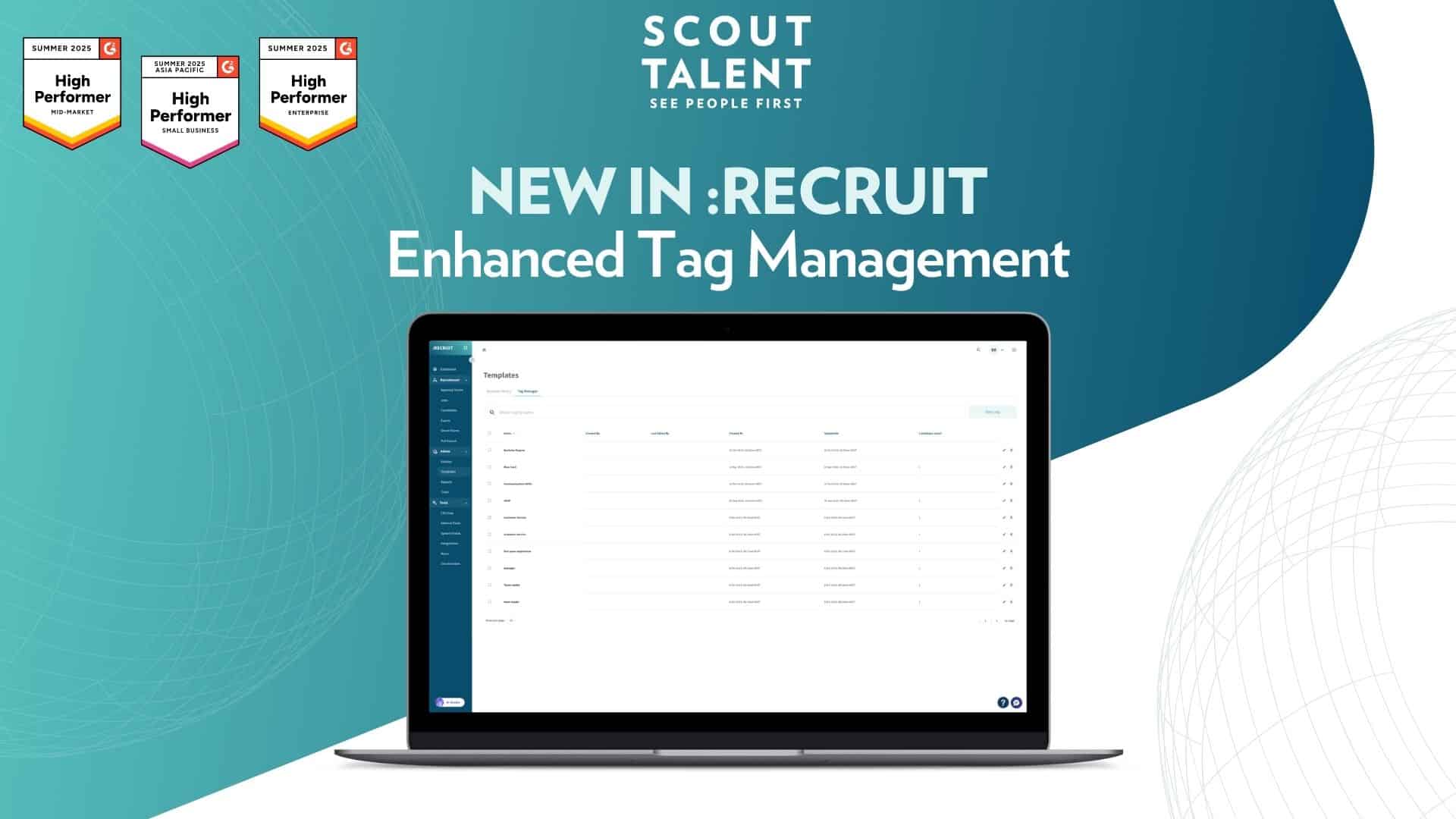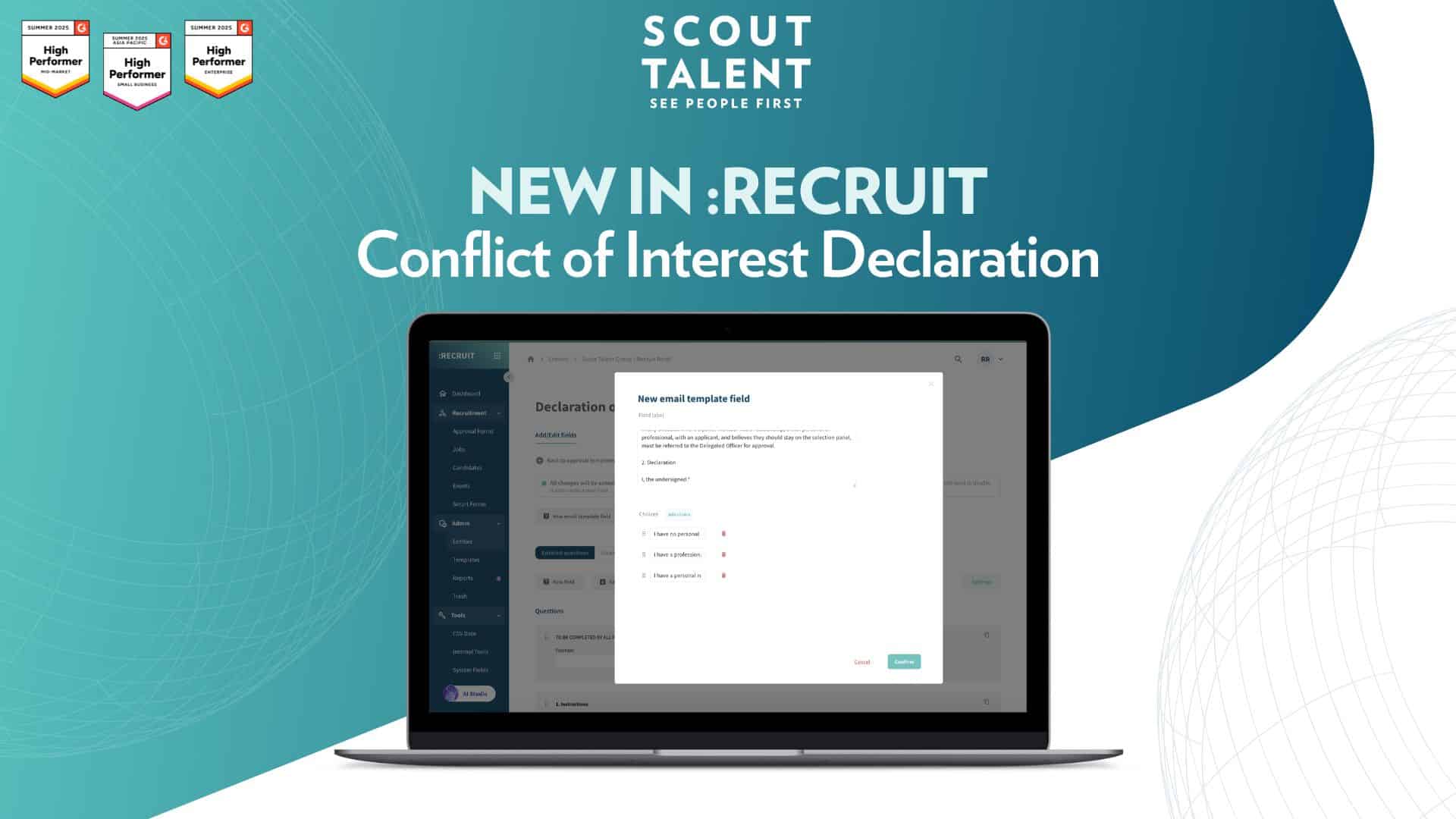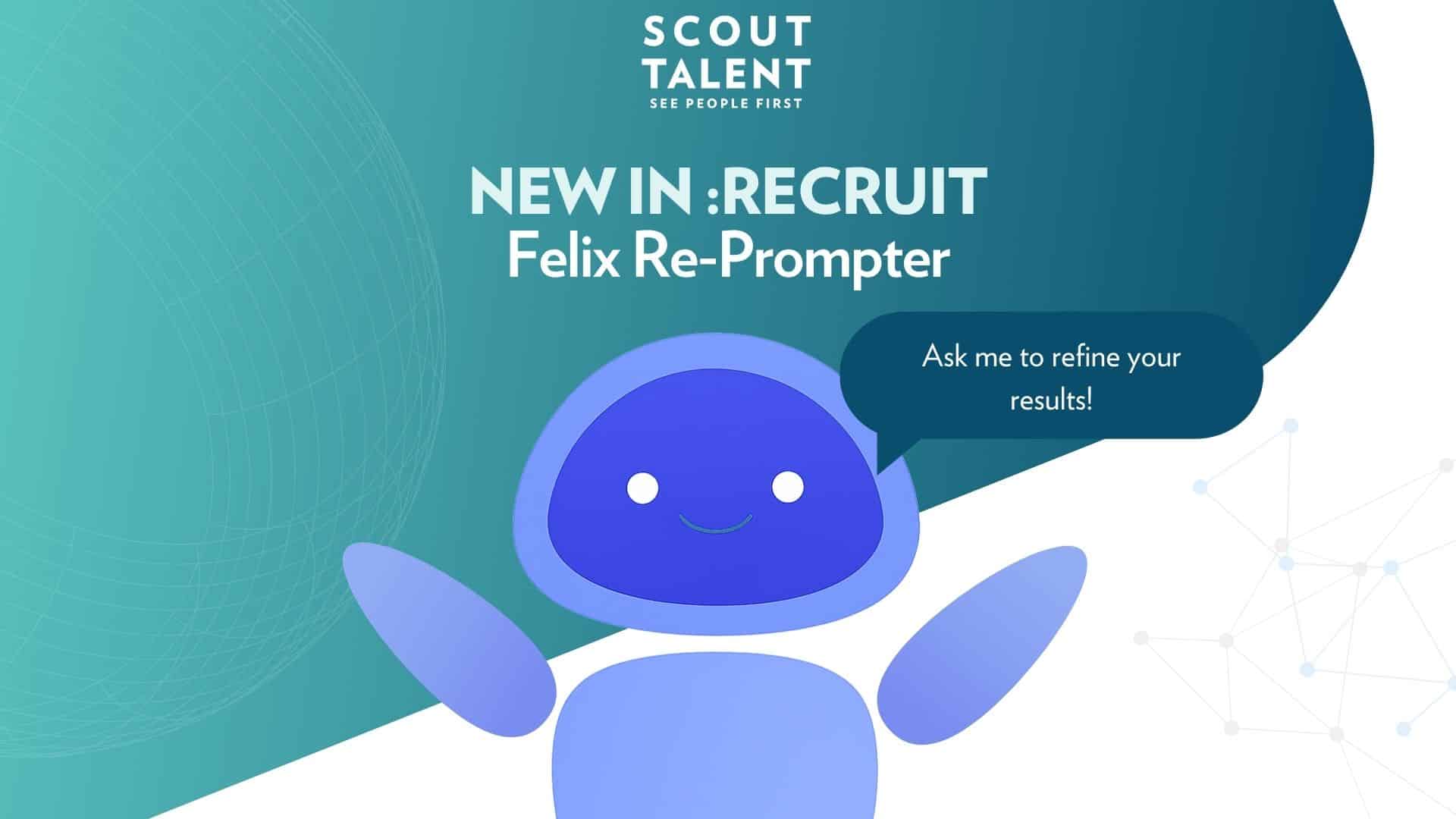First impressions are important. For many jobseekers, your job ad is the first contact they’ll have with your organisation and you only have about forty-nine seconds to convince them that your job ad is worth reading to the end, according to the Wall Street Journal. So how are you going to make your job ads convert candidates into applicants? Moreover, how can you ensure that your job ad copywriting draws in the right applicants for your role and your organisation?
Don’t just copy-paste a job description you found online and let your job ad drown in a sea of sameness. Tailor your recruitment marketing strategy so that it speaks to your ideal candidate and connects with their values and interests.
Now, bear with us as we cover a lot of detail below. We understand that it’s a lot to absorb. So, if you need support or don’t have the time to put all of this into action, we are here to help! Depending on your needs, you could save time and effort by leveraging tools like Scout Talent’s AI Studio, which drafts engaging, on-brand job advertisements in seconds, or by partnering with a Recruitment Marketing specialist who can craft a compelling job ad for you as part of a broader Recruitment Campaign.
With that said, before we detail how to write a great job description and ideal candidate specification, let’s start with some broader guidelines that underpin the rest of your recruitment marketing campaign.
Avoid unconscious bias and stereotypes in your copy
The language you use in your job ad is incredibly powerful, and its impact depends on how you wield it. Too often, we communicate without a lot of conscious thought. And worse still, even when we are discerning about the language we use, we are still susceptible to unconscious bias. It’s in the name, after all.
It’s not easy to produce inclusive job ad copywriting because unconscious bias, by definition, is difficult to nail down and address. Without realising it, your tone or phrasing skews towards cultural, gender, or industry stereotypes that significantly limit your talent pool. Understanding unconscious bias and working to eliminate it from your job ads is key to attracting more diverse candidates to your roles and strengthening your organisation’s culture of inclusivity.
Tips for eliminating unconscious bias in job ads:
- Avoid using gendered language that reinforces stereotypes. For example, using words with masculine overtones like “strong” and “ambitious” speak more to male applicants and can put women off from applying for the same role. This is because, unconsciously, women realise that these terms don’t speak to them as deeply.
- Ensure that key position terms are not gender-specific, for example, use “salesperson” rather than “salesman” or “flight attendant” rather than “steward” or “stewardess”.
- Be conscious of language that creates a bias against mature aged candidates, like “up and coming” or “a young spirit”. Terms like these implicitly associate youth with being “good” and a mature age with being “bad” and turn highly-skilled mature age applicants away from your vacancy.
For organisations that want additional support, Scout Talent offers two excellent options: AI Studio can help create inclusive, bias-free job ad copy quickly and efficiently, while a Recruitment Marketing specialist can work closely with you to ensure your job ad language aligns with diversity and inclusivity best practices.
How to structure a job ad like a professional
Now that the language you use in your job ad is at the front of mind, let’s go through the best way to structure a job ad to get the best results. Two major components of any job ad are the job description and ideal candidate specification:
Job description
This outlines the key responsibility, duties, and objectives of a given role. It also outlines the salary and benefits that you’re offering to new recruits, and reporting lines within the organisation. Importantly, a good job description helps a candidate decide whether they want to pursue a particular role or not.
To make this process easier, you have two fantastic options. AI Studio can draft detailed, brand-aligned job descriptions in seconds, saving you time and ensuring clarity. Alternatively, by running a Recruitment Campaign, you gain access to a Recruitment Marketing specialist who can craft job descriptions that align with your organisation’s goals and speak directly to your ideal candidates.
How to write a job description that attracts the right candidates
There are a number of things to include in a comprehensive job description. You need to communicate specific information clearly and concisely so that candidates easily understand the role and build an impression of your organisation. It’s challenging to strike the balance between delivering detail and being succinct. So you may need to workshop your job ad copywriting skills as you go.
Here are three key things to include in your job description overall:
- Start with a company description. These days, talent acquisition is a two-way process and candidates want to know as much about you as you want to know about them. Sell your organisation in your copy by outlining key products and services, success stories, growth plans, and organisational culture. Warning: do not oversell and underdeliver. The damage is far worse if you fail to meet a candidate’s expectations after hiring.
- Stop relying on corporate speak and jargon. There are so many reasons why using lots of jargon in job ads is bad for business. Firstly, jargon is off-putting to young people and you don’t want to alienate the future of the workforce. Secondly, jargon and buzzwords reduce clarity and confuse applicants, and may even make jobseekers feel less intelligent. Consider swapping out technical terms for layman’s terms, especially for graduate roles. You should also forgo abstract terms like “dynamic”, “self-starter”, and “empower” for more concrete language where possible. That brings us to the third most compelling reason to skip jargon. According to a study by New York University, jargon is less accurate, less engaging, and less trustworthy.
- Outline a salary range, benefits, and learning opportunities. Although salary isn’t the most important thing to candidates anymore, it’s still incredibly important to give them an idea of the remuneration on offer. Be sure to detail other benefits on offer, too, that may speak to a more diverse audience. Things like work from home opportunities, free parking, childcare, flexible hours, parental leave, profit sharing and the like are enticing to a wide range of applicants. Similarly, employers and team members alike understand that up-skilling and re-skilling is key to career and organisational growth.
Ideal candidate specification
This comes after the job description and gives candidates what they need to determine whether they are qualified for the role. The job specification lists qualities that the candidate must or should have in order to qualify for the role. Most often, these include things like educational qualifications, training or experience in specific duties, adjacent skills that support high performance in the role, and previous work experience.
The ideal candidate specification is equally important for internal stakeholders, like hiring managers. This is because it clearly outlines what the ideal candidate should look like on paper. Having well-defined criteria makes it easier to fairly rate and rank candidates for selection.
How to write an ideal candidate specification that speaks to people
Writing an ideal candidate specification can be challenging. Often, organisations want candidates to have every qualification under the sun to perform roles that really don’t require that scope of experience. It’s important to be reasonable – align your team on what’s critical to perform well in the role versus what would be nice to have. Similarly, write your ideal candidate specification in such a way that it speaks to transferable and adjacent skills. In a tight candidate market, this approach is more accessible to candidates making career changes or trying something new.
Here are a few key things to include when creating your ideal candidate specification:
- Limit your selection criteria to absolute must-haves. We’ve said before that our recruitment experts know not to chase unicorns. Pare your unending list of qualifications back to those that are vital to perform well in the role. You can include desirable traits or experience in the description, but label them as such.
- Outline required competencies to find a good culture fit. Think about how your ideal candidate would interact with colleagues and clients. Try to put into words the competencies or behaviours that person might possess. For example, is your ideal candidate someone who’s flexible, or analytical? Is it very important that team members in your organisation have exceptional emotional intelligence? Core competencies aren’t the same as soft skills. They are behaviours and they’re usually more difficult to teach.
- Be clear about necessary qualifications. What kind of professional or educational qualifications, tickets, or licences are required for the role? Be sure to include any legal requirements that may exist for the role, like special training or clearances. Additionally, be realistic about the relevant qualifications for a role at that level in your organisation.
- Similarly, be realistic about the level of experience required. Outline what previous experience your ideal candidate should have. Think about if they require similar experience in a similar role, or whether similar experience in a different industry might work just as well. Think laterally and include transferable skills and experience to reach more candidates with the right experience. For example, many food service workers have the right skills and experience to perform well in a customer service role, even though the industries and roles seem very different at first blush.
Scout Talent’s AI Studio can help you draft specifications quickly and accurately. For a more tailored approach, a Recruitment Marketing specialist can collaborate with you to create cohesive and compelling specifications that resonate with your target audience.
Don’t underestimate these descriptions
The job description and ideal candidate specification are arguably two of the most under-utilised parts of the recruitment process. If you are understaffed and under-resourced, copy-pasting a job description from the internet seems like it saves you time to get the job done. In fact, tailoring your job ad copywriting to your organisation’s unique needs actually starts the filtering process earlier in the piece. You, your recruiter, and your applicants use a comprehensive job description and ideal candidate specification to understand what’s required to be successful in the role. Leaving these descriptions broad may invite less suitable candidates to apply, unwittingly, and bog down your processes.
Don’t forget an organisation description
You’d do well to include a description of your organisation, as most employers, strangely, don’t bother. More than ever, candidates care who they work for as much as what work they’ll do. Talent acquisition is a two-way process, and it shouldn’t be purely transactional.
Job ad copywriting tips to stand out from the crowd
One of the best tips for job ad copywriting is to align your job description closely with your ideal candidate specification. The kind of candidate you want should result logically from the job described. This is true for all elements of the descriptions. For example, if you are filling an entry-level role (outlined in the job description) then you are looking for an entry-level candidate (outlined in the ideal candidate specification). The same goes for cultural fit, values, and behaviours. The more closely these descriptions are aligned, the easier it is to fairly assess candidates and make a strong recruitment decision.
Once you’ve crafted an incredible job ad, you can learn how recruitment experts choose the right candidate for the job.
Ready to elevate your recruitment marketing strategy? Scout Talent offers two powerful solutions: AI Studio for fast, automated content creation, and Recruitment Campaigns for specialist support in crafting compelling job ads. Whether you need a quick start or a hands-on expert, we’re here to help. Learn more about both options and get in contact today.



